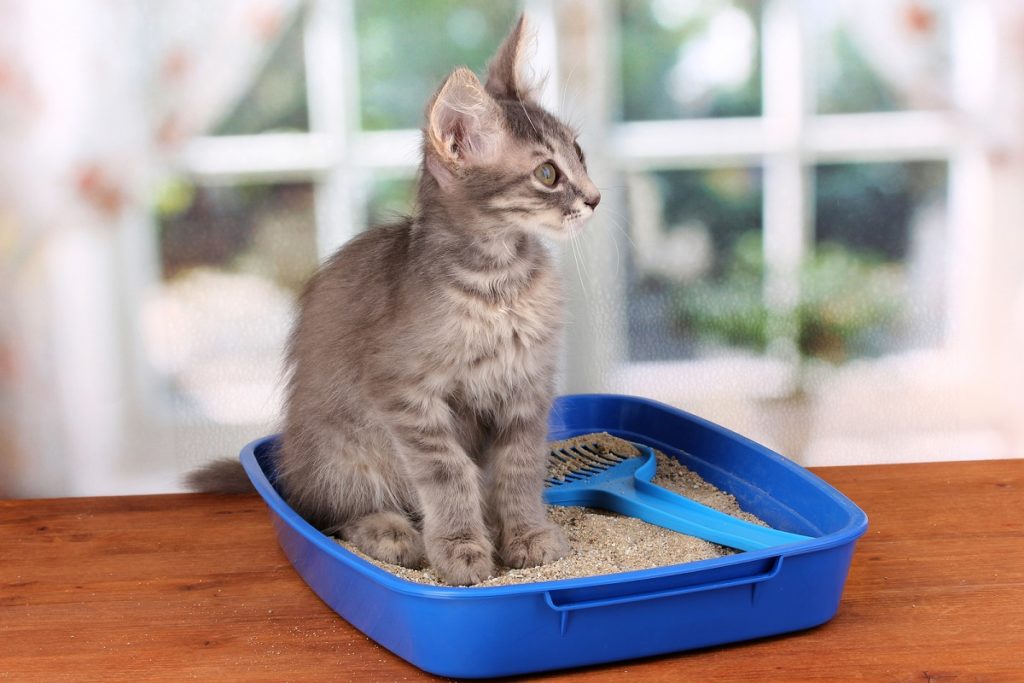Table of Contents
Training your cat to use a litter box is essential for maintaining a clean and stress-free environment. While cats are naturally inclined to bury their waste, providing the right setup and guidance can help ensure successful litter box training. Here are 10 proven tips on how to train a cat to use a litter box.

1. Choose the Right Litter Box: How to Train a Cat to Use a Litter Box
Select a litter box that is appropriate for your cat’s size and age. Kittens may need a smaller box with low sides, while larger cats may require a bigger box with higher sides to prevent litter from spilling out.
- Tip: Avoid covered litter boxes initially, as some cats may feel confined. For more information, visit ASPCA.
2. Find the Perfect Location
Place the litter box in a quiet, accessible location where your cat can use it without disturbances. Avoid high-traffic areas and ensure the box is not near their food and water bowls.
- Tip: If you have multiple cats, provide one litter box per cat plus an extra to prevent territorial issues. For more advice, visit Humane Society.
3. Use the Right Litter: How to Train a Cat to Use a Litter Box
Choose a litter that your cat prefers. Most cats like unscented, clumping litter. Experiment with different types if your cat shows reluctance to use the box.
- Tip: Avoid changing the type of litter suddenly; instead, mix the new litter with the old one gradually. For more tips, visit PetMD.
4. Introduce Your Cat to the Litter Box
Show your cat the litter box and gently place them inside it. Let them sniff and explore it. Do this especially after meals and naps when they are most likely to need to go.
- Tip: Avoid forcing your cat into the litter box, as this can create a negative association. For more advice, visit The Spruce Pets.
5. Keep the Litter Box Clean: How to Train a Cat to Use a Litter Box
Clean the litter box regularly to ensure it remains hygienic and appealing to your cat. Scoop out waste daily and change the litter completely at least once a week.
- Tip: Use mild, unscented soap and water to clean the box, avoiding harsh chemicals. For more information, visit Petfinder.
6. Provide Positive Reinforcement
Encourage your cat to use the litter box by offering praise, treats, or affection when they use it correctly. Positive reinforcement helps create a positive association with the behavior.
- Tip: Reward your cat immediately after they use the litter box to reinforce the connection. For more tips, visit VetStreet.
7. Address Litter Box Avoidance: How to Train a Cat to Use a Litter Box
If your cat avoids the litter box, identify and address the underlying cause. This could be due to a dirty box, an unsuitable location, or a preference for a different type of litter.
- Tip: Consult your veterinarian if the avoidance persists, as it could indicate a medical issue. For more advice, visit ASPCA.
8. Use Multiple Litter Boxes
In a multi-cat household, provide multiple litter boxes to reduce competition and ensure each cat has access to a clean box. This can help prevent territorial issues and encourage consistent use.
- Tip: Place litter boxes in different locations to give your cats options and reduce stress. For more tips, visit Hill’s Pet.
9. Be Patient and Consistent: How to Train a Cat to Use a Litter Box
Litter box training takes time and patience. Be consistent with your approach and give your cat plenty of time to adjust to the new routine.
- Tip: Avoid punishing your cat for accidents; instead, clean the area thoroughly and continue positive reinforcement. For more advice, visit PetMD.
10. Monitor Your Cat’s Health
Keep an eye on your cat’s health and behavior. Changes in litter box habits can indicate medical issues such as urinary tract infections or gastrointestinal problems.
- Tip: Regular veterinary check-ups can help identify and address any health issues early. For more information, visit ASPCA.
Conclusion: How to Train a Cat to Use a Litter Box
Successfully training a cat to use a litter box involves providing the right setup, being patient, and using positive reinforcement. By following these tips and addressing any issues promptly, you can ensure a clean and stress-free environment for both you and your feline friend. For more tips on cat care and behavior, visit our website.
Frequently Asked Questions about How to Train a Cat to Use a Litter Box
Why is my cat not using the litter box?
Your cat may not use the litter box due to various reasons, including a dirty box, an unsuitable location, a preference for a different type of litter, or a medical issue. Identifying and addressing the underlying cause is essential. For more information, visit ASPCA.
How can I prevent my cat from having accidents outside the litter box?
Prevent accidents by keeping the litter box clean, providing multiple boxes in multi-cat households, choosing the right location, and using positive reinforcement. Consult your veterinarian if accidents persist. For more tips, visit Humane Society.
What type of litter is best for training a cat?
Most cats prefer unscented, clumping litter. However, some cats may have specific preferences. Experiment with different types if your cat shows reluctance to use the box. For more advice, visit PetMD.
How often should I clean the litter box?
Clean the litter box daily by scooping out waste and replace the litter completely at least once a week. Use mild, unscented soap and water to clean the box and avoid harsh chemicals. For more information, visit Petfinder.
Can I train an older cat to use a litter box?
Yes, older cats can be trained to use a litter box. Be patient and consistent, use positive reinforcement, and ensure the box is easily accessible. For more advice, visit The Spruce Pets.











